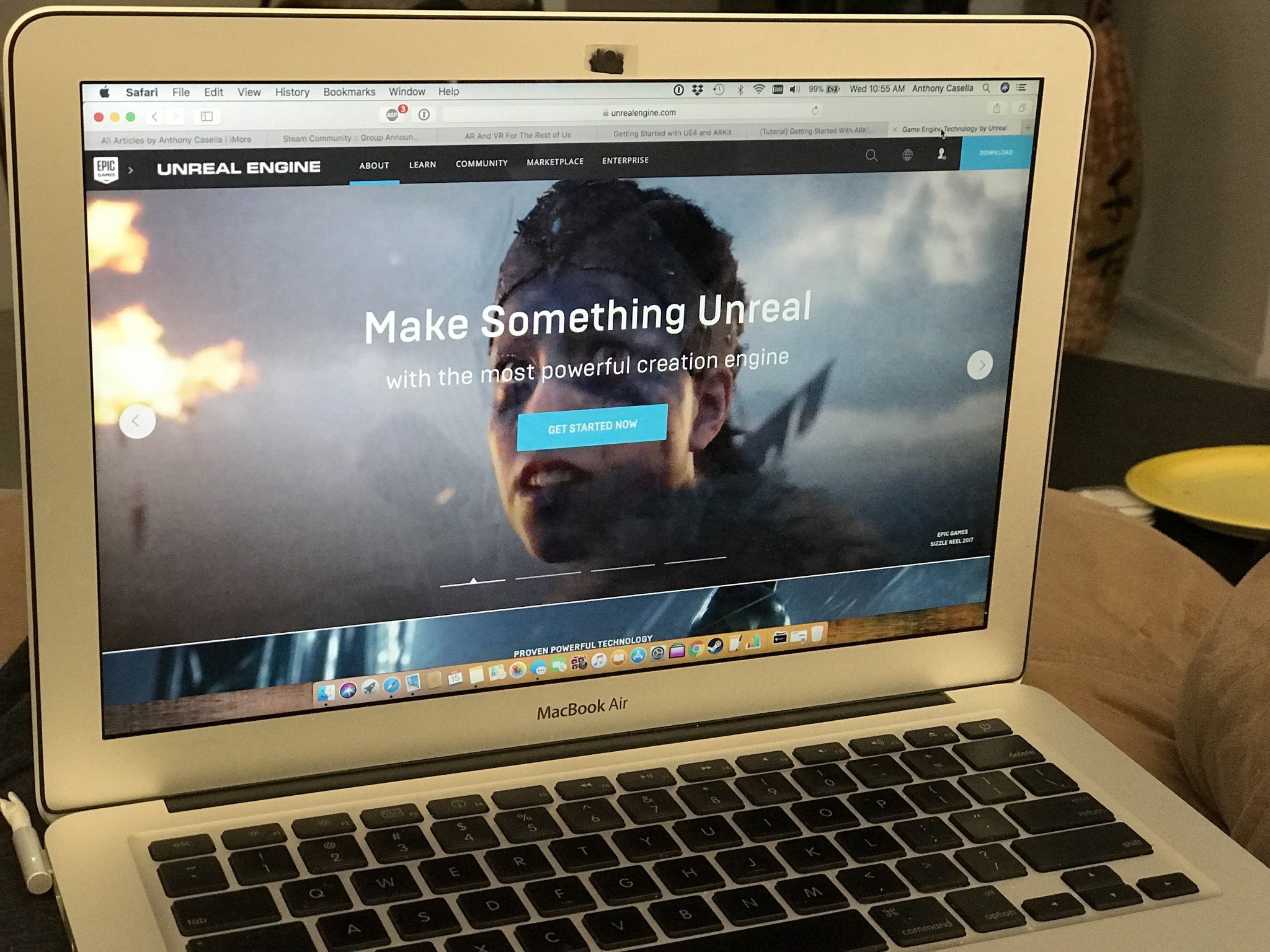Resources to get you started with ARKit

Virtual reality and augmented reality are no longer industry buzzwords. More and more companies are releasing AR-enabled applications such as Amazon's Store app that allows you to "see" what a product will look like in your home and Clips 2.0, which changes your surroundings in real time when recording live video.
With all of this support from Apple, there is very little in the way of you developing some amazing AR apps using 3D engines.
If you're a Unity 3D engine or Unreal engine developer that is interested in creating augmented reality apps for iOS, here's where you can get the information you need to bootstrap your project. You can also check out how to get started in porting your VR apps to SteamVR for macOS if you're so inclined.
- What is the Unity 3D Engine?
- What is the Unreal Engine?
- How to get started with ARKit on macOS and Unity
- How to get started with ARKit on macOS and Unreal
- Go to the Unity and Unreal forums for questions
What is the Unity 3D Engine?
One development toolkit is the Unity 3D Engine. Although Unity first started life as an Apple-only 3D engine, it now supports a myriad of platforms and architectures. You can freely download the engine for personal use and learn the skills required to make amazing 3D applications with their online tutorials.
Unity 3D engine provides an ARKit specific plugin that allows you to create and develop projects. According to its website:
The Unity plugin will provide developers with friendly access to ARKit features like world-tracking, live video rendering, plane estimation and updates, hit-testing API, ambient light estimation, and raw point cloud data.
What is the Unreal Engine?
Another development toolkit is the Unreal Engine. Unreal is named after the wildly popular 1998 FPS Unreal) and its underlying platform has since been released and updated for anyone to register and download to hone their skills. Unreal provides access to forums and tutorials to help you learn basic and more advanced techniques.

How to get started with ARKit on macOS and Unity
When you've decided that you're primed enough and are ready to get started, you'll need the following to develop ARKit enabled apps on macOS:
Master your iPhone in minutes
iMore offers spot-on advice and guidance from our team of experts, with decades of Apple device experience to lean on. Learn more with iMore!
- You need to install macOS High Sierra or higher. Updates to Metal and GPU drivers have been made to macOS that facilitate the adoption of VR and AR capable applications on macOS.
- You'll need to download the experimental build of Unity. As with any new technology, the bugs will need to be worked out. The more developers that are out there building their wares on macOS, the faster we can squash them out.
- You'll need iOS 11 or later on your devices.
- You must use XCode 9 or later, with iOS SDK{.nofollow} that includes ARKit Framework.
- Finally, you'll need an iOS device that is supported by ARKit Framework such as the iPhone 6s and up.
How to get started with ARKit on macOS and Unreal
Perhaps your development tastes are geared towards the Unreal engine. Here are the need pieces to get up and running:
- You need to install macOS High Sierra or higher. Updates to Metal and GPU drivers have been made to macOS that facilitate the adoption of VR and AR capable applications on macOS.
- Register and download Unreal Engine 4.17 and up, with ARKit Support.
- Download and install XCode 9 or higher.
- Ensure you have an iPhone or iPad with iOS 11 or higher.
Go to the Unity and Unreal forums for questions
If you feel stuck or need help with some aspect of your Unity code, there are dedicated forums for Unity and forums for Unreal where you can discuss and collaborate with other macOS ARKit developers.
Final thoughts
So there you have it! I've pointed the way, all we need now is for you creative types to follow the path. From my personal experiences with VR and AR (which have been extensive), it's obvious to me that we are living in the future. Will you be an AR pioneer and catch the wave early on, or are you going to take your time and refine your skills to release something the world has never seen?! Let us know in the comments!
Updated September 2018: Updated for the official launch of iOS 12 and macOS Mojave.

